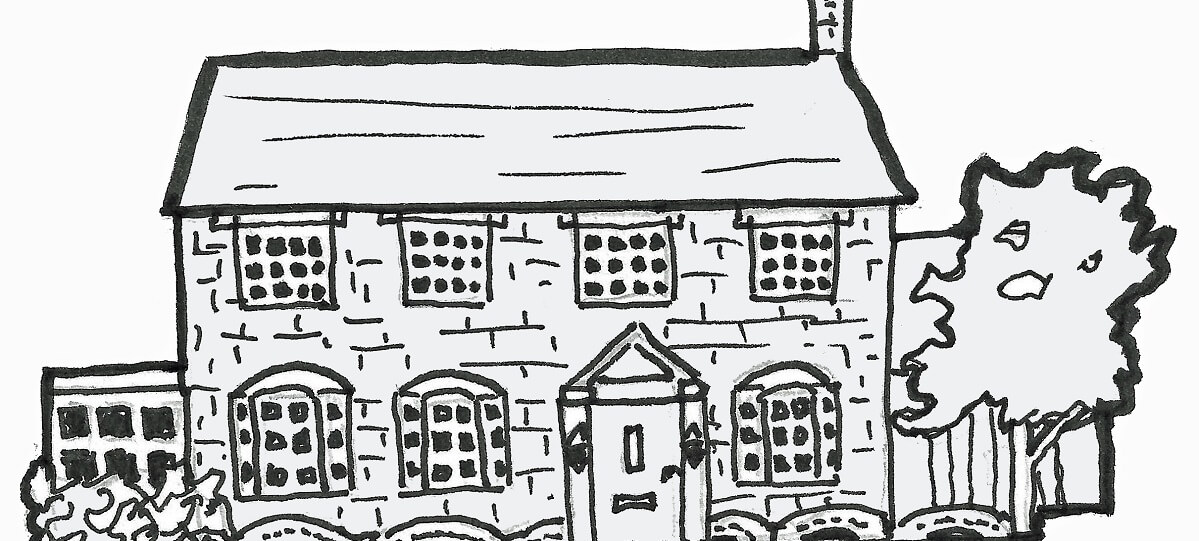How a Victorian poet and a Pre-Raphaelite painter found inspiration in our countryside
by Alison Bailey April 2023
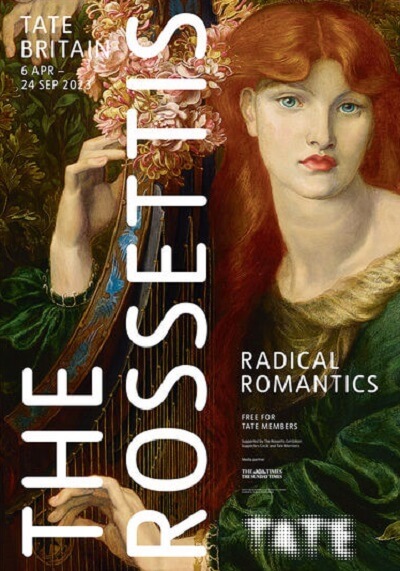
Tate Britain have just opened an exciting exhibition, The Rossettis, which is running until 24 September 2023, which inspired me to write about our local connections to the Rossetti family. The countryside around Amersham, Little Missenden, and particularly Holmer Green, then famed for its cherry orchards, inspired the paintings of Dante Gabriel Rossetti. The Pre-Raphaelite art movement founded by Dante Gabriel Rossetti and his brother William, aspired to paint realistic images of the natural world through close observation.
The countryside also had a lifelong influence on the celebrated poet, Christina Rossetti. Despite living most of her life in gloomy London houses, her poems are full of images and references to the rural world she experienced as a child at the home of her maternal grandparents, the Polidoris, in Holmer Green.
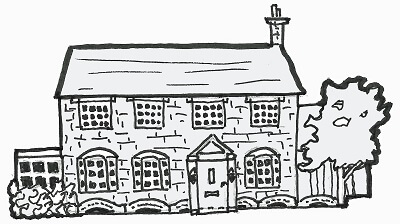
This history is reflected in the local names. Little Missenden Parish Council office building is named Rossetti Hall, and Polidoris Lane and Rossetti Place were built on what had been the Polidori’s farm, later Polydores House, in Holmer Green. Polidoris cottage in Polidoris Lane is said to have been built from the reclaimed bricks of the farmhouse.
The Rossetti Family
The Rossetti parents were both academic and educated. Gabriele Rossetti was an Italian poet and political exile from Vasto, near Naples, where he is commemorated in a statue. After fleeing the Kingdom of Naples with a price on his head, he emigrated to England in 1824, and established a career as a Dante scholar and teacher of Italian in London. He was appointed Professor of Italian at the newly founded Kings College London in 1931. He married the half-English, half-Italian Frances Polidori in 1826 and four children followed in quick succession: Maria, born in 1827, Gabriel, in 1828, (famous under the name Dante Gabriel but always called Gabriel by family members) William, in 1829, and Christina, in 1830. The family lived at 38 Charlotte Street, behind Portland Place, a tall house with no garden, before moving to a similar, large house at number 50. The house was usually filled with Italian academics and exiles, debating politics and art and declaiming poetry.
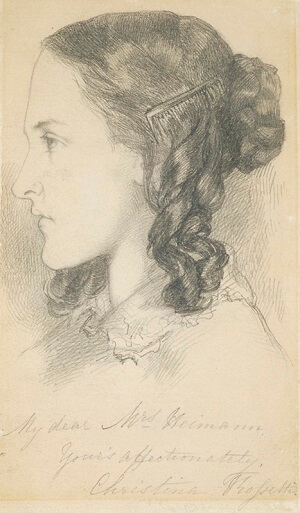
Frances Polidori had worked as a governess from the age of 16 and educated all four children at home before the two boys were sent to Kings College School to learn Latin and other subjects beyond Frances Rossetti’s capability. The girls had to make do with learning from their brothers’ textbooks. Whilst closest to William in age, Christina was closest to the fiery, talented Gabriel in temperament. Their father described them as the two “storms”, as opposed to Maria and William, who were the “calms”.
It was a bi-lingual household with the children speaking Italian with their father and English with their mother. They were encouraged to be creative and wrote poetry and prose as well as to paint and draw and all four became distinguished writers. Maria was the author of a respected study of Dante, as well as books on Italian grammar and religious instruction. Dante Gabriel is known to us as an eminent painter, but he also published volumes of poetry, and was considered one of the foremost poets of his era. William was a prolific art and literary critic, editor, and wrote the first account of the Pre-Raphaelite movement. Christina became one of the Victorian age’s finest poets. She was the author of numerous books of poetry, including Goblin Market and other Poems (1862), The Prince’s Progress (1866), A Pageant (1881), and The Face of the Deep (1882).
The Polidoris
Frances’ English mother, Anna Maria Polidari, née Pierce, had also been educated by her academic parents and had worked as a governess. Suffering from ill-health and often bedridden, she moved permanently to the family farmhouse in Homer Green, then a quiet and isolated community. She was a strict High Anglican, raising her daughters in her faith which Frances in turn passed on to Christina and Maria, who later became an Anglican nun.

Anna Maria’s Italian husband, Gaetano Polidori, retired to Holmer Green in 1936, but returned to London in 1939. The library at the house was considered so impressive that it was known as Holmer College in the village. The Rossettis were frequent visitors and Christina, whom he nicknamed Vivace, was particularly close to her grandfather. He said that she “avrà più spirito di tutti”, which translates as “will have more spirit than all of them”.
Gaetano Polidori had studied law at the University of Pisa and worked as secretary to Vittorio Alfieri, a distinguished poet and playwright in Italy and France where he witnessed the storming of the Bastille. He settled in Highgate, London and married Anna Maria, after establishing himself as an Italian teacher and translator. As well as translating literary works such as John Milton’s Paradise Lost, he also published his own poems, plays and fiction. The couple had seven children and the eldest son, John William Polidori, a doctor, found fame as Lord Byron’s physician. He is credited as the creator of the vampire genre of fantasy fiction. Also a published poet, his most successful work was the short story The Vampyre (1819), the first published modern vampire story. This was conceived in the Villa Diodati, on Lake Geneva, on the same evening that Mary Shelley first created Frankenstein. In 1821, John Polidori took his own life with prussic acid over gambling debts which was a terrible blow to the Polidori family. Frances Rossetti treasured a Byronic portrait of her handsome brother, now in the National Portrait Gallery, and always displayed it in the family home.
Country holidays
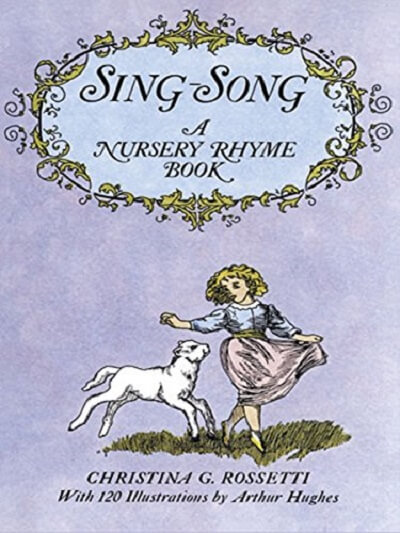
Gabriele recorded his youngest daughter playing at Holmer Green “with rosy cheeks and sparkling eyes, taking tentative steps in the garden ‘like a butterfly’ among the flowers and current bushes”. Late in life, Christina Rossetti, wrote to the journalist Edmund Gosse that her literary inspiration had started during her happy childhood in Holmer Green and particularly in “Grandpapa’s garden”, where she had “the delightful idle liberty to prowl all alone about the cottage grounds” which offered “inexhaustible delight”. Here holly, cherry trees and blackthorn bushes sheltered the songbirds that features in Christina’s book of nursery rhymes, Sing-Song.
The 30-mile journey to Holmer Green was via stagecoach to High Wycombe or via Amersham where the family, and later, unaccompanied children, were dropped off in Little Missenden. This then involved a two mile walk up Penfold Lane. This steep hill is believed to be the inspiration for Christina’s first major success, the devotional poem, Uphill. She also set a children’s story in Holmer Green.

The Rossetti household had numerous pets, and in the countryside around Holmer Green, Christina developed a fascination for insects and all minute creatures, which she later recorded in Time Flies: A Reading Diary (1885). She often joined her brothers, catching frogs in the village pond and had her “first vivid experience with death” when she found a dead mouse in the orchard and witnessed its decay. The beauty and corruption of the natural world were recurring themes in her poetry.
Publication
Christina’s poems were first published commercially in the literary magazine the Atheneum in 1848 and The Germ, the magazine founded by the Pre-Raphaelite Brotherhood, in 1850. However, Gaetano Polidori printed a collection of her poems Verses in 1847, when Christina was just 16. Printed on Polidori’s private printing press, this collection was distributed widely amongst family and friends. Christina became one of the few 19th century women to earn her living by her writing and was one of the most popular poets of the Victorian Era. Today her poems Remember and When I Am Dead, my Dearest are popular choices at funerals and memorial services, but she is probably best remembered for her poem, In a Bleak Midwinter, now sung as Christmas carol.
Sources
Christina Rossetti, A Literary Biography, Jan Marsh
Dante Gabriel Rossetti, His Family Letters, with a Memoir, William Michael Rossetti
https://babel.hathitrust.org/cgi/pt?id=uc1.b4824555&view=1up&seq=15
https://www.poetryfoundation.org/poets/christina-rossetti
History (holmergreenvillagesociety.co.uk)
Christina Rossetti – Additional Biographical Information (victorianweb.org)
Wikipedia
The Rossettis, Radical Romantics, Tate Britain
Christina Rossetti, Selected Poems, edited by Dinah Roe

